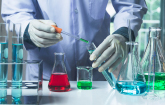Kanazawa University Research: High-precision On-site Analysis of Precious Metals in Metallurgical Waste Spills
KANAZAWA, Japan, July 27, 2018 /PRNewswire/ --
Researchers from Kanazawa University report in Sensors and Actuators B: Chemical the application of a portable and efficient method for the on-site analysis of wastewaters for the quantitative analysis of their gold, platinum and palladium content.
(Photo: https://mma.prnewswire.com/media/723732/Kanazawa_University_Onsite_Analysis_Infographic.jpg )
Precious metals come in limited supply but are in high demand. They are mainly sourced through mining, but the possibility of recycling them from metallurgical waste leachates (waters that have passed through the treated materials during mineral processing and thus contain some of the compounds present in the minerals) is attracting growing attention. To this end, compact and portable instruments to perform the analysis of wastewaters in on-field rapid analysis are highly desirable to improve the efficiency of the recovery of precious metals.
Liquid-electrode plasma-optical emission spectrometry (LEP-OES) has emerged as a tool to implement on-site analysis of elements in aqueous matrices, as it is portable and much less costly than traditional methods. However, when the concentration of noble metals is very low, as is the case for precious metals in waste spills, the sensitivity of the technique become insufficient to produce accurate analysis - one of the problems is that in metallurgical waste leachates there are several ions that interfere with the analysis. In this case, analyte separation and enrichment steps (that is, steps that remove other substances and increase the concentration of the analyte to make detection easier) have to be included in the analysis of the samples for accurate detection of the precious metals.
This is what Suman Barua, Ismail M.M. Rahman, Hiroshi Hasegawa and colleagues from Kanazawa University and Fukushima University did, reporting the first application of LEP-OES in combination with a solid-phase extraction (SPE) system (which is used as the pre-treatment step to eliminate the competing ions and to enrich the noble metals) for the rapid on-site simultaneous analysis of the precious metals gold, palladium and platinum. The SPE parameters were optimized to maximize retention and recovery of the precious metals; the LEP-OES parameters to maximize the emission peaks for the individual elements.
The method was tested both on certified reference material for wastewater and on real aqueous waste samples, from which more than 95% of the precious metals were recovered. The high-precision on-site measurements could be performed in less than 15 minutes, opening the way to practical analysis of the precious metal content of wastewaters.
Background information
Matrix
In the context of chemical analysis, the term matrix indicates all components of the sample that are not the element or compound of interest.
Liquid-electrode plasma-optical emission spectrometry and solid-phase extraction
In liquid-electrode plasma systems, a liquid sample is inserted in a micro channel at the ends of which a high voltage is applied, generating a microplasma that acts as the excitation source for emission spectrometry. Liquid-electrode plasma-optical emission spectrometry is an analytical method that has the advantage of not requiring a nebulizer (unlike most other methods). Moreover it can operate on batteries and is compact and portable. However, the sensitivity is not high enough to detect metals in very low-concentration samples. To analyze this type of sample, liquid-electrode plasma-optical emission spectrometry can be combined with solid-phase extraction, a method that is used to increase analyte concentration before the analysis. In solid-phase extraction, the analyte is first retained on a supramolecular sorbent that uses host-guest chemistry, then extracted in a more concentrated form.
Reference:
Suman Barua, Ismail M.M. Rahman, Maho Miyaguchi, Asami S. Mashio, Teruya Maki, Hiroshi Hasegawa, On-site analysis of gold, palladium, or platinum in acidic aqueous matrix using liquid electrode plasma-optical emission spectrometry combined with ion-selective preconcentration. Sensors and Actuators B: Chemical, 272, 91−99 (2018)
https://doi.org/10.1016/j.snb.2018.05.132
About Kanazawa University
As the leading comprehensive university on the Sea of Japan coast, Kanazawa University has contributed greatly to higher education and academic research in Japan since it was founded in 1949. The University has three colleges and 17 schools offering courses in subjects that include medicine, computer engineering, and humanities.
The University is located on the coast of the Sea of Japan in Kanazawa - a city rich in history and culture. The city of Kanazawa has a highly respected intellectual profile since the time of the fiefdom (1598-1867). Kanazawa University is divided into two main campuses: Kakuma and Takaramachi for its approximately 10,200 students including 600 from overseas.
Kanazawa University website: http://www.kanazawa-u.ac.jp/e/
Further information
Kanazawa University
Kakuma, Kanazawa, Ishikawa 920-1192, JAPAN
E-mail: intl.pr@adm.kanazawa-u.ac.jp
Tel: +81(76) 264-5963


Share this article